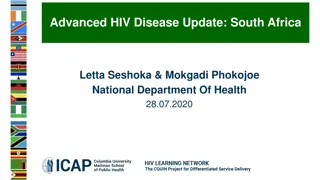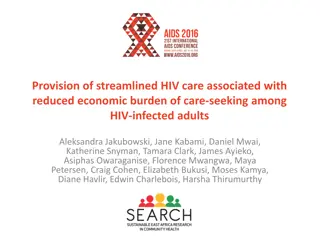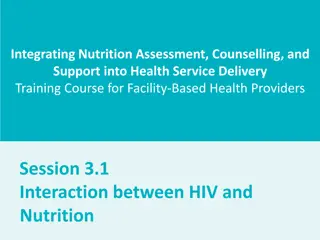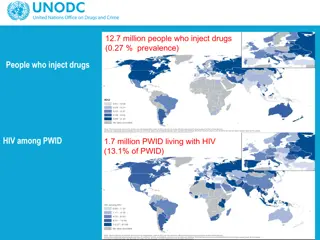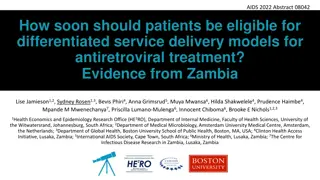Service Delivery Preferences Among Stable HIV Patients in Zambia
A study conducted in Zambia explored the service delivery preferences of stable patients on antiretroviral therapy (ART) through a discrete choice experiment. The research focused on the benefits of differentiated service delivery, gaps in knowledge regarding patient preferences, and demographic characteristics of participants. Results highlighted variations in preferences based on different settings and attributes, such as location of ART pick-up and visit frequency. The study aimed to understand patient preferences to enhance retention in care and improve HIV treatment outcomes in Zambia.
Download Presentation

Please find below an Image/Link to download the presentation.
The content on the website is provided AS IS for your information and personal use only. It may not be sold, licensed, or shared on other websites without obtaining consent from the author. Download presentation by click this link. If you encounter any issues during the download, it is possible that the publisher has removed the file from their server.
E N D
Presentation Transcript
Community ART for Retention in Zambia: Service delivery preferences among stable patients on ART - A discrete choice experiment Centre for Infectious Disease Research in Zambia (CIDRZ) In partnership with the Zambian Ministry of Health Sponsor: Bill & Melinda Gates Foundation 19thSeptember 2018 Collaborators: James Cooke University, Johns Hopkins, UAB, UCSF, UNZA
Benefits of differentiated service delivery (DSD) Decrease visits Decongest clinic Less waiting time at the facility Buddy pick-up Peer support Decrease stigma
Gaps in knowledge - Which DSD elements do patients prefer? - How do preferences vary? - What model should we choose for which setting?
Methods Attribute: Levels: Clinic Community Every month Every 3 months 1 hour total 3 hours total 6 hours total 1 hour total 3 hours total 5 hours total Individual counseling Small group counseling (< 6 people) Large group counseling (>15 people) Buddy system in place No buddy system in place Location of ARV pickup Frequency of ARVs pick up Time spent in picking up ARVs Time spent in seeing the doctor Adherence Counseling Buddy System
Demographic characteristics Characteristics (N = 486) Male sex Age (years; median and interquartile range) N (%) 198 (41%) 39 (33-46) 54 (11%) 294 (60%) 76 (16%) 62 (13%) 120 (25%) 251 (52%) 76 (16%) 39 (8%) 105 (22%) 213 (44%) 65 (13%) 103 (21%) 411 (85%) 75 (15%) Never married Married Living separately or divorced Widowed None Some primary school Completed primary school Higher education Employed steady wages Self employed Housewife Unemployed* Urban Rural Marital status Education level Employment status Clinic setting
Variation in preference by setting Preference weight -0.74 1.32 0.95 2.19 Attributes SE p-value Location of ART pick-up - clinic vs community Rural participants Urban participants Rural participants Urban participants 0.37 0.50 0.39 0.50 0.049 <0.001 0.015 <0.002 Visits 3 monthly vs 1 monthly
Conclusions Overall preferences vary Reducing frequency of visits - most valued Urban participants Want to get ART at the clinic Rural participants Want to get ART in the community
THANK YOU Questions? We would like to thank the Zambian Ministry of Health and all participating patients and health workers.






